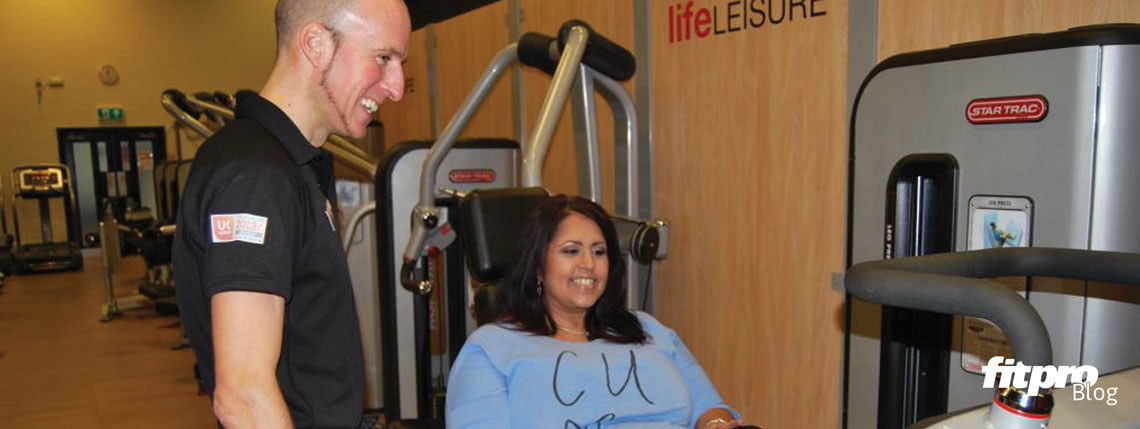As a personal trainer, you can encounter many different health complications in your clients. Here, physical activity coach and personal trainer Rocky Lindley from not-for-profit company Life Leisure explains how he helped Anita Nickson, who has an autoimmune disease that causes deep wounds in the body.
I first met Anita, 50, as her personal trainer at her initial fitness consultation at our gym in Stockport. She had been sent there by her GP, via the local Physical Activity Referral Scheme (PARiS). Despite her multiple health problems, I noticed straight away how determined Anita was to improve her health, and this has enabled her to battle through.
Anita has osteo- and rheumatoid arthritis, diabetes and pyoderma gangrenosum (PG), an autoimmune disease that causes deep wounds in the body that are difficult to heal. She was using a wheelchair, frame and crutches to get around. After developing a particularly deep wound, Anita underwent a battery of life-saving treatment for six years, with 29 hospital admissions – three of them emergency ones to save her life. Amazingly, about six months before the wound finally healed, she attended our gym, vowing to get fitter.
Not surprisingly, Anita was terrified of opening up the wound again through exercise, so we had to take things really gently at first. As her personal trainer, I gave her support to work round her condition. She did five repetitions on the weights machine in the first session and now she can do up to 200. I’m proud to say that, two years later, Anita still attends our gym twice a week – with rare breaks when she is particularly unwell. Not only has she given up her wheelchair, she credits the gym with keeping her mentally positive too.
PG is a cruel disease and I have been privileged to work with Anita as her personal trainer as she fights her way to fitness against the odds. She is one of an increasing number of people with chronic conditions who are turning to us for help in getting healthier. Here are my five top tips for working with clients like Anita, who face particular health challenges:
- Consider peer support. Some people benefit from one-to-one support from a coach – but others like to be with people in the same situation. We run an exercise class for people with lung disease and regularly have up to 30 attending, all supporting each other to manage their condition. In a situation like that, we are facilitators, not experts.
- Keep it simple. Remember how formidable a gym can look to somebody who isn’t used to keeping fit. Break information into bite-sized chunks and keep the exercise simple at first, so that people are inspired to return for regular sessions.
- Stay flexible. By all means agree a fitness programme with clients but be realistic: there will be weeks when they can’t follow it. A flexible approach will keep them on track. Can’t exercise today? There’s always tomorrow.
- Focus on the positives. If somebody has vowed to lose weight and puts on a couple of pounds, concentrate on the good things they’ve done, like going for regular walks or sticking with a gym session.
- Keep goals small and achievable. You want clients to feel success early on, so let them come up with their own goals. Their long-term goal might be to play footie with a grandchild but, initially, it might be a five-minute walk every day. Give clients a chance to achieve and exceed their personal goals – they’ll keep coming back.







